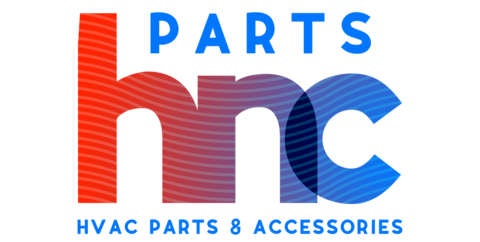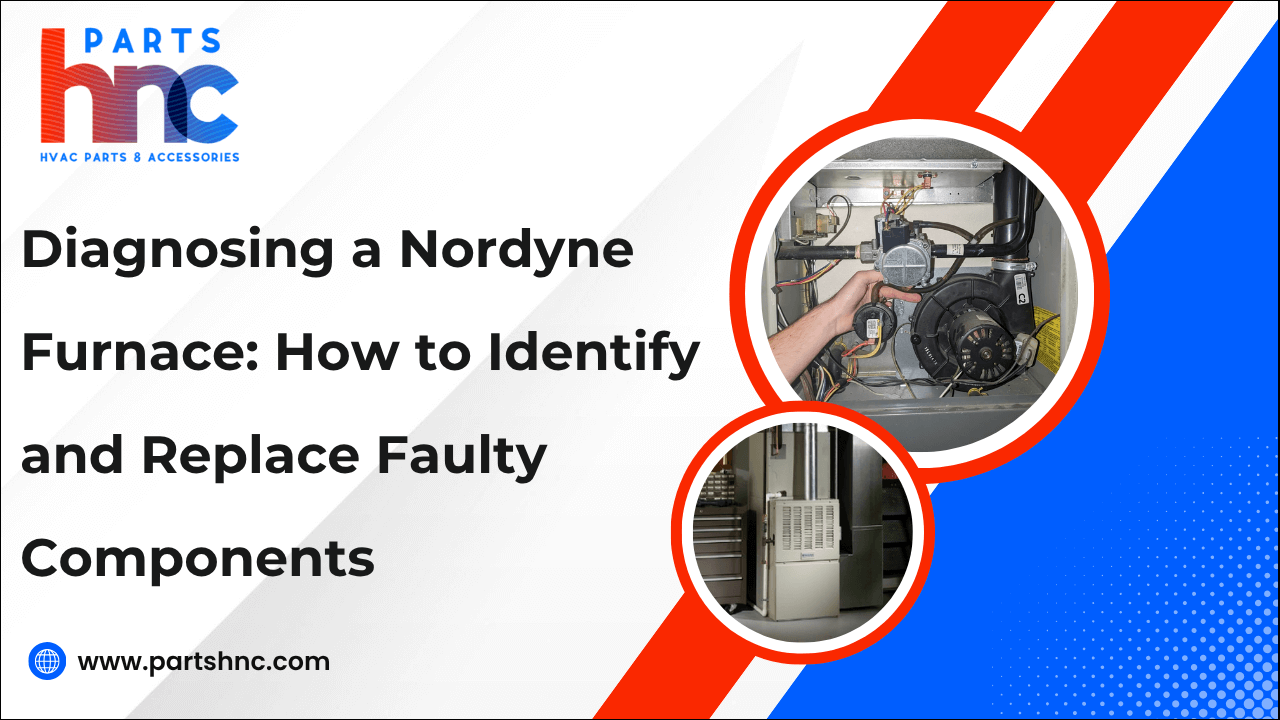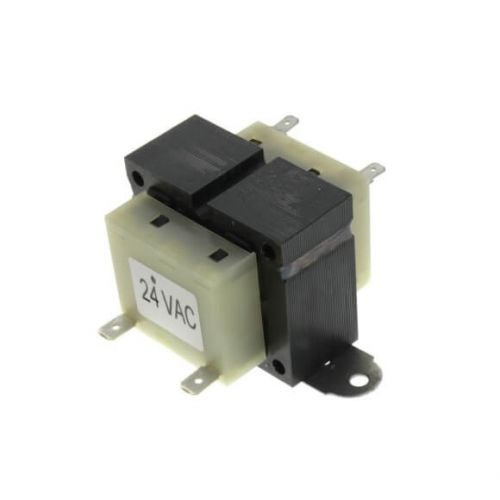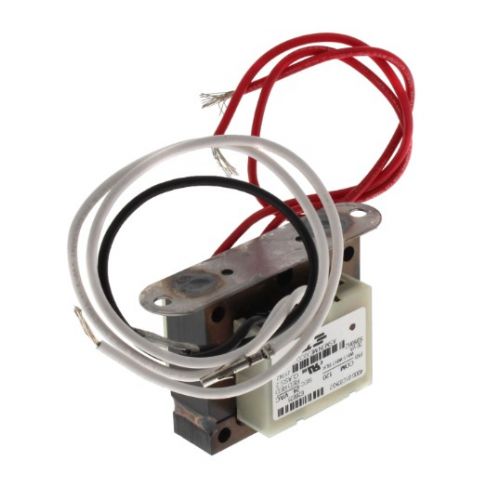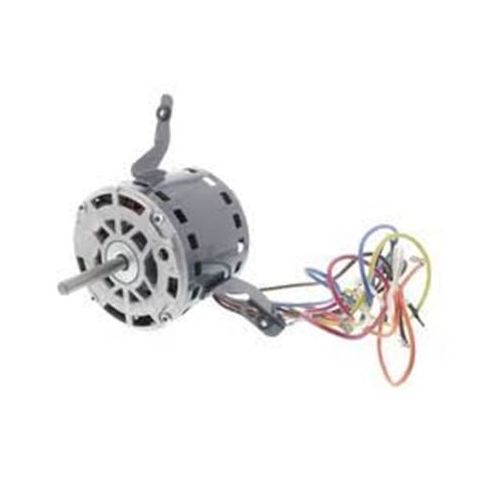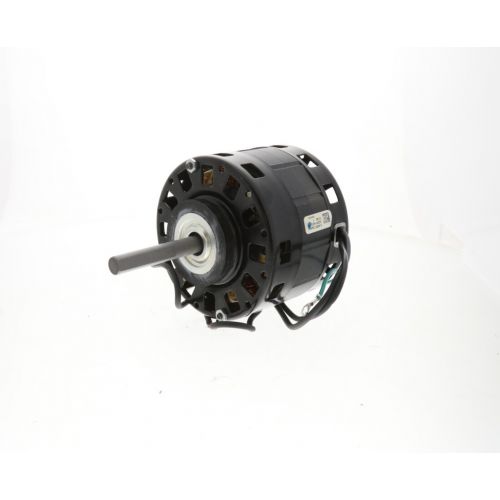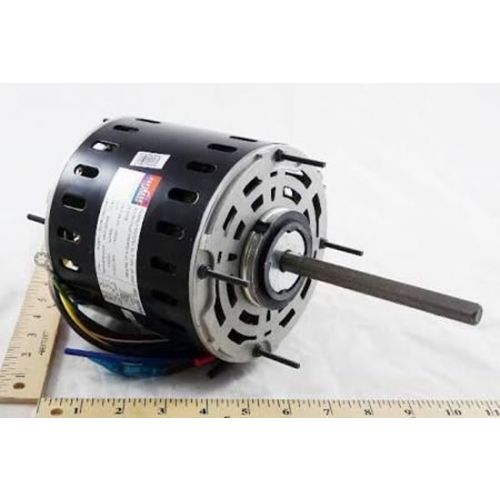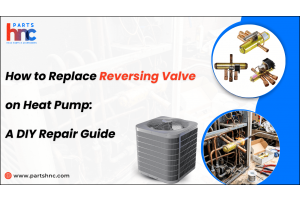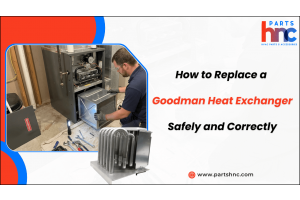Diagnosing a Nordyne Furnace: How to Identify and Replace Faulty Components
Diagnosing issues with your Nordyne furnace is essential to ensure reliable heating and comfort throughout the colder months. Understanding how to identify common faulty furnace parts can save you time, money, and unnecessary service calls. From ignition problems and blower malfunctions to thermostat errors and limit switch failures, recognizing the signs early allows for timely repairs or replacements. This guide will walk you through the most frequent furnace issues, helping you pinpoint which Nordyne furnace parts may be causing trouble. Whether you’re a homeowner tackling DIY repairs or a technician seeking a refresher, knowing how to troubleshoot your Nordyne furnace efficiently ensures your heating system runs smoothly and safely all season long.
Understanding How a Nordyne Furnace Works
A Nordyne furnace relies on multiple components working in harmony to deliver efficient heating. Knowing each component's function can make it easier to see possible issues. Having this basic knowledge is important before you start troubleshooting or making repairs.
-
Thermostat: By detecting the ambient temperature, the thermostat regulates when the furnace turns on or off.
-
Igniter: The igniter creates the spark or heat needed to light the gas and start the furnace.
-
Burners and Flame Sensor: Burners burn the gas to produce heat, while the flame sensor ensures the flame remains steady and safe.
-
Heat Exchanger: The air is warmed by the heat exchanger before being circulated through your home.
-
Blower Motor: The hot air is circulated throughout your duct system by the blower motor.
-
Control Board: The control board manages all furnace functions and coordinates the operation of each component.
-
Limit Switch and Safety Sensors: These sensors monitor heat and airflow to prevent the furnace from overheating or operating unsafely.
Understanding these components helps you diagnose problems more easily and decide whether to attempt repairs yourself or call a professional HVAC technician.
Looking to repair your Nordyne furnace quickly and reliably? PartsHnC offers high-quality replacement parts like flame sensors, igniters, and blower motors from trusted brands such as Nordyne, Honeywell, and Goodman. Find everything you need to get your furnace back in top shape fast and hassle-free!
Common Nordyne Furnace Problems Every Homeowner Should Know
While furnaces are generally dependable, they can still encounter common Nordyne Furnace problems that impact their performance and your home’s comfort. Early detection of these issues can aid in efficient troubleshooting and the identification of when expert assistance is required. Here are some typical Nordyne furnace issues:
-
Furnace Not Heating: This can be caused by thermostat malfunctions, gas supply interruptions, or issues with the ignitor or pilot light.
-
Regular Cycling: Excessive on-and-off cycling frequently indicates restricted airflow, dirty air filters, or overheating.
-
Igniter Failure: A faulty or worn ignitor stops the furnace from igniting, leading to no heat production.
-
Blower Motor Problems: When the blower motor fails, heated air can’t circulate, leaving rooms cold despite the furnace running.
-
Defective Flame Sensor: A dirty or broken flame sensor may shut down the furnace to prevent unsafe operation.
-
Control Board Issues: Nordyne control board problems often lead to irregular furnace behavior or a complete system shutdown, as the board manages all core functions.
-
Thermostat Malfunctions: Improper settings or a faulty thermostat can prevent the furnace from activating or maintaining the desired temperature.
-
Cracked Heat Exchanger: A serious defect that risks carbon monoxide leaks and requires immediate professional attention.
-
Pressure Switch Problems: A faulty Nordyne furnace pressure switch can prevent the system from igniting if it fails to detect proper airflow or venting.
For your Nordyne furnace to run safely and effectively throughout the heating season, routine inspections and prompt repairs are necessary.
Steps to Diagnose Your Nordyne Furnace
Diagnosing your Nordyne furnace parts requires a step-by-step approach to identify what’s causing the malfunction. Whether your furnace isn’t heating or is cycling too often, these steps will help guide you through the process:
Step 1: Check the Thermostat Settings
Make sure your thermostat is set to “heat” and that the temperature setting is higher than the current room temperature. Make sure it's operating properly and change the batteries if needed.
Step 2: Examine the Air Filter
The furnace may overheat and shut off if airflow is restricted by a filthy or blocked air filter. Replace the filter if it looks dirty or hasn’t been changed in the past 1–3 months.
Step 3: Look for Error Codes
Most Nordyne furnaces have an LED light that flashes Nordyne furnace troubleshooting codes. Refer to the manual to decode the blinking pattern and identify specific system faults.
Step 4: Inspect the Ignitor and Flame Sensor
Check the ignitor for cracks or signs of wear. The furnace may not stay on if the flame sensor is dusty. if necessary, gently clean it with fine sandpaper.
Step 5: Test the Blower Motor
If no warm air is coming through the vents, the blower motor could be the issue. Check to see if the fan runs when the switch is set to "on" or listen for odd sounds.
Step 6: Inspect the Control Board
Look for signs of burnt components, loose wiring, or any visible damage. The control board controls most furnace functions and can cause various issues if faulty.
Step 7: Check the Heat Exchanger
Turn off the furnace right away and get in touch with a qualified expert if you think the heat exchanger is cracked. Cracks can leak carbon monoxide, posing serious health risks.
By following these steps, you can narrow down common Nordyne furnace problems and decide whether a simple fix or professional service is needed.
Check out this helpful guide on troubleshooting common Lennox furnace pressure switch problems to identify and fix pressure switch issues in your furnace.
How to Replace Faulty Components in a Nordyne Furnace
Fixing your faulty Nordyne furnace parts can help restore its performance and prolong its life. Many common parts can be changed at home with the right equipment and precautions. Below are straightforward, step-by-step instructions for replacing key furnace parts.
Replacing the Flame Sensor
The purpose of the flame sensor is to identify the burner flame. It may cause the furnace to abruptly shut off if it gets unclean or breaks.
-
Turn Off Power: Switch off power to the furnace at the breaker to ensure safety.
-
Find the Flame Sensor: Inside the furnace, locate the flame sensor close to the burner assembly.
-
Remove the Sensor: To remove the mounting screw that is holding the sensor in place, use a screwdriver.
-
Clean or Replace the Sensor: Gently clean the sensor with fine-grit sandpaper or replace it with a new one if damaged.
-
Reinstall and Restore Power: Reattach the sensor, tighten the screw securely, and turn the power back on.
Replacing the Igniter
The igniter lights the burner gas to start heating. The furnace won't generate heat if the igniter is broken or cracked.
-
Turn Off Power and Gas Supply: Switch off both the furnace’s power and gas supply to avoid hazards.
-
Locate the Igniter: Find the igniter near the burner assembly.
-
Remove the Igniter: Carefully unscrew the igniter from its mounting.
-
Disconnect Wiring: Detach the wiring harness connected to the igniter.
-
Installing a New Igniter: Reattach the wiring after positioning the new igniter.
-
Secure and Restore: Restart the gas and electrical supplies after screwing the igniter into position.
Replacing the Blower Motor
Warm air is forced through your house by the blower motor. The airflow will stop if it fails.
-
Turn Off Power: Ensure the furnace power is off at the breaker.
-
Remove Access Panel: Use a screwdriver to remove the furnace’s access panel.
-
Disconnect Wiring: Carefully unplug the cables that are attached to the blower motor.
-
Remove Motor Assembly: Slide the blower motor assembly out of the furnace.
-
Replace and Reconnect: Insert the new motor, reconnect the wiring, and reassemble the furnace.
-
Restore Power and Test: Restart the electricity and make sure the blower motor is running properly.
Replacing the Control Board
The control board regulates furnace control functions. A faulty board can cause irregular operation or stop the furnace entirely.
-
Power Off Furnace: Completely switch off power to the furnace.
-
Label Wires: Mark all of the wires that are attached to the control board using labels or masking tape.
-
Disconnect Wires: Carefully remove all wires from the control board.
-
Remove Faulty Board: Unscrew and take out the defective control board.
-
Install New Board: Set up the new control board and attach all of the cables to the appropriate terminals.
-
Secure and Test: Fasten the board, restore power, and test furnace operation.
Tip: Always consult your Nordyne furnace manual for specific instructions and safety precautions. If you’re uncertain or uncomfortable performing any repairs, contact a licensed HVAC professional to prevent injury or damage.
When to DIY and When to Call an HVAC Technician for Nordyne Furnace Repair
Knowing which Nordyne furnace repairs you can do yourself versus when to hire a pro helps avoid mistakes and saves money. Use this guide to make the right choice.
|
When to DIY |
When to Call an HVAC Technician |
|
Simple maintenance tasks like changing air filters |
Persistent blower motor failure |
|
Replacing basic components such as thermostat batteries or flame sensors |
Cracked or damaged heat exchanger |
|
Cleaning accessible furnace parts, like dust removal |
Control board malfunctions |
|
Resetting the furnace after minor error codes |
Gas leaks or suspected carbon monoxide issues |
|
Inspecting and tightening loose wiring connections that are easy to reach |
Strange noise, odors, or frequent cycling despite fixes |
|
Lubricating blower motor bearings or replacing visible blower belts |
Electrical problems beyond simple resets |
|
Handling minor, non-electrical problems that don’t involve gas |
Complex repairs involving gas or electrical systems |
Preventive Maintenance Tips to Avoid Future Nordyne Furnace Breakdowns
Routine maintenance is essential to keep your Nordyne furnace operating efficiently and to avoid expensive repairs. Use these important tips to maintain your system effectively:
-
Replace or Clean Air Filters Frequently: During the heating season, change or clean your air filters once a month. This keeps your furnace from overworking and helps maintain enough airflow.
-
Clean the Blower Motor and Fan: Accumulated dust can make the blower motor and fan less efficient. Regular cleaning keeps them running smoothly and reduces the risk of overheating.
-
Inspect the Flame Sensor and Igniter: A dirty flame sensor or a faulty igniter can cause ignition failures. Regular inspections and cleaning ensure your furnace starts reliably.
-
Keep the Area Around the Furnace Clean: Keep debris and dust out of the vicinity of your furnace. This reduces the risk of fire and encourages appropriate ventilation.
-
Schedule Yearly Expert Furnace Inspections: Make an appointment with a trained HVAC technician for annual inspections. They can identify such problems early and make the required corrections.
-
Verify Gas Leak and Safety Measures Testing: During professional servicing, technicians check for gas leaks and verify that safety controls are working correctly. This safeguards your home and furnace.
By consistently applying these preventive measures, you can prolong your furnace’s lifespan and enjoy dependable, energy-efficient heating throughout the colder months.
Check out this detailed guide on DIY furnace burner maintenance to learn simple steps that enhance performance and extend your furnace’s lifespan.
Conclusion
Properly diagnosing and addressing faulty Nordyne furnace parts is crucial for maintaining a safe and efficient heating system. Timely identification and replacement of worn or malfunctioning parts not only prevent costly breakdowns but also extend the life of your furnace. While some repairs are manageable with basic tools and knowledge, knowing your limits and calling a professional when necessary ensures both your safety and the longevity of your equipment. Staying proactive with diagnostics and repairs will keep your Nordyne furnace performing optimally year after year.
FAQs
Why does my Nordyne furnace keep shutting off?
Your Nordyne furnace may shut off due to a dirty flame sensor, a clogged air filter, or a faulty pressure switch. Overheating or short cycling caused by restricted airflow can also trigger shutoffs.
Where is the furnace reset button located?
The reset button is usually located inside the blower compartment, near the blower motor. It’s typically a small red or yellow button you press to reset the system.
Will a Nordyne inducer motor failure cause furnace problems?
Yes, a failed inducer motor can prevent proper venting of combustion gases, causing the furnace to shut down for safety. This can stop the ignition process entirely.
